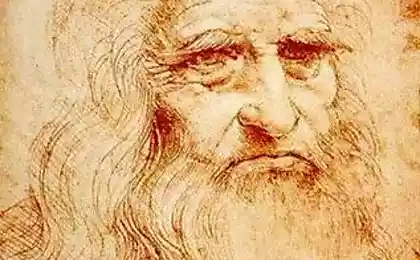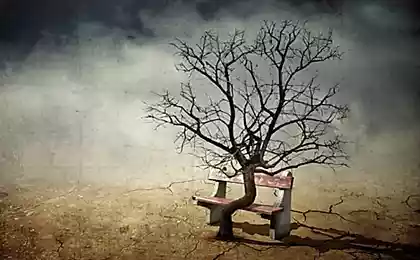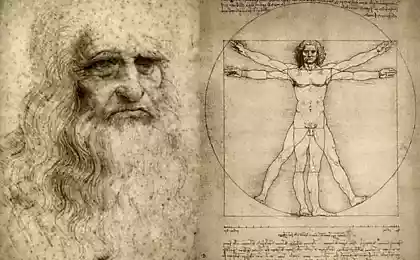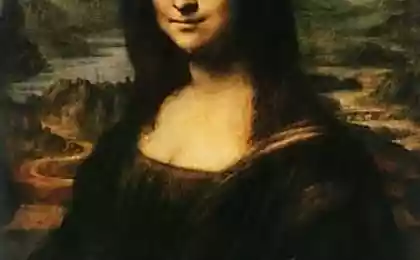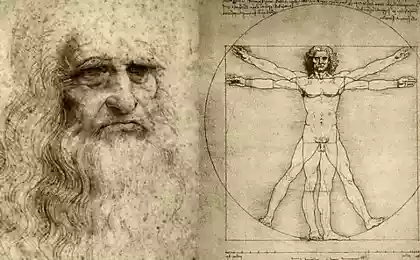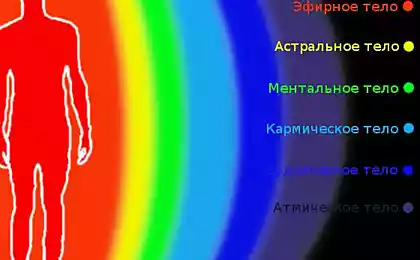639
7 principles of Leonardo da Vinci
Leonardo da Vinci. Almost every inhabitant of our planet have heard about the greatest Italian painter, architect, sculptor, scientist, philosopher, thinker, engineer, inventor and one of the most outstanding artists of the High Renaissance.
Life, work and creativity of this man forever changed the world and ideas about it. Why are only his "Vitruvian man", "the last supper" and "Mona Lisa" or projects unprecedented in his era inventions?! Leonardo da Vinci was a genius. And at the same time – the usual person, same as we all do. But what allowed him to work day and night to generate new ideas to create incredible projects and be one of the best men of his time?
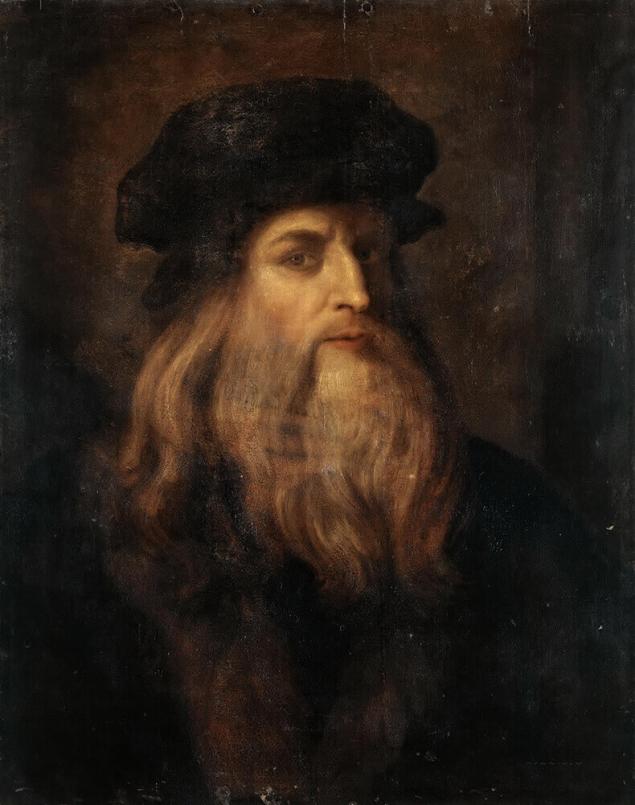
The life and work of Leonardo da Vinci studied and continue to be studied by many researchers around the world. And the most prominent representative of this category of researchers is an American writer and researcher in the field of the essence of creativity and the harmonious interaction of mind and bodyMichael Gelb.
Just on account of his 13 published books on the creative aspect of the personality of the great artist. Most prominent among these books are "Decoded da Vinci code" and "Learn to think and draw like Leonardo da Vinci: seven steps to genius every day" which became a bestseller.
In his latest book, Michael Gelb describes seven creative principles of the famous masters, who in their daily lives can be used by you to develop creativity and maximize their creative potential. It is about them we will discuss in the present article.
7 principles of creativity Leonardo da Vinci

1. Curiosity/Curiosita
Curiosity in a different measure is peculiar to each person. You must have paid attention to the fact that children, for example, always ask a lot of questions about absolutely everything: "Why is the sea blue?", "How do birds fly?", "How is rain formed?". This is especially true for children up to 5 years. So they get information about the world. However, according to Michael Gelb (and many psychologists, by the way), the level of curiosity is reduced over time, as children begin to go to school, where, as a rule, many questions already have answers, and those questions, answers which are not, is simply omitted.
So creativity has always been at a high level and allowed to create and find new ideas, one must remain curious throughout his life. And curious need to stay childish interest in everything: what, how, why, where, why? All these questions should serve as a fuel for creativity and set direction for work.
2. Independent thinking/Dimostrazione
For creativity, you must be able to think different and to look at the same things and phenomena from different sides. Over time each person finds their point of view on something, it releases its position and its attitude. This, of course, good, but very often leads to one-sided thinking: people looking for confirmation of only what fits his vision, only interested in the fact that he "fit", surrounds himself with the relevant materials. And any other opinions and points of view they begin to rejected.
Really creative people should be careful of this – he must have a broad vision and to consider all different positions that will allow them to be in their thinking, independent, non-trivial and objective.
3. The acuteness of perception/Sensazione
This assumes the ability of man to truly enjoy life and his determination to do so, and to live "in full" every time, seeing the meaning in small things and be happy.
Attention to detail is very important for creativity. Many people today have forgotten (never learned!) feel the breeze, the fragrance of flowers, the glare of the sun on the water, twinkling stars in the sky – all this is overlooked, people harden and become impervious to anything other than short-term Affairs and everyday worries.
A creative person needs to improve their perception and train their five basic senses. Michael Gelb advises to apply this to art, music, poetry, and also from time to time to pamper yourself with a good wine and chocolate.
4. Uncertainty/Sfumato
As you know, uncertainty often causes fear in man. People are afraid to take unusual action that goes counter to their habits and established beliefs tend to avoid unusual situations.
But if a person can be confident even in unusual circumstances, it opens wide horizons for creativity. By Michael Galbo, huge and plogicalnot effect on creativity is having the surprise and new discoveries, the recognition of what one did not know before.
And if you do only what is used, of any discoveries may not be considered.If you aspire to become and to be truly creative person, you must cultivate a vague image of yourself, but definitely be confident. But the desire for obscurity and paradox must become part of your nature.
5. Imagination and logic/Scienza
Well – known fact- the left hemisphere of the human brain responsible for analytical thinking and the right for creative. Each person has development of one will always prevail over the other.
However, in the modern world in order to effectively generate new innovative ideas people have to try to develop both hemispheres, i.e., to purposefully develop logical and creative thinking.
Michael Gelb believes that this best facilitates the drawing. Take a sheet of paper and a pencil and try to formulate my thoughts into images. What do you get? What associations do you have? Try to remove something or to add. Is it possible to apply it in your life? Think about it, invent new ideas and analyze them. This will help you to develop your brain as best you can.
6. Balance body and mind/Corporalita
Not everyone knows that Leonardo da Vinci, among other things, was well developed physically. He even was considered one of the most powerful in all of Florence people and was a great rider and an excellent fenced.
Michael Gelb is sure that creative activity is a special kind of intellectual exercise that requires considerable energy resources. Man, physically weak, in his opinion, will never be able to raise your creative potential to the proper level.
And so one of the integral components of the creative activity and life of a creative person are physical exercise and sport activities and, of course, keeping yourself in good shape. Leonardo da Vinci, by the way, is equally well possessed with both hands.
7. Diagram of connections/Connessione
The relationship diagram can also be called the diagram of thoughts or a schematic view of systems thinking. Michael Gelb is of the opinion that this diagram is very important for the ability to generate new ideas, because it illustrates the limitless possibilities of the human brain.
In most cases it is a special tree system, where the center is the main concept, and branching off in different directions "branches" — call them associations. Use a diagram of the relationships in creative activities very effectively. About it says at least the fact that she almost always used for brainstorming, strategic planning and different kind of training.
Contrary to the widespread opinion that creative thinking is a gift and is not available to those who are of this gift has not, it is not. A person can make a discovery or invent something, anything to not making, only in very rare cases.
The energy of success: How the subconscious mind attracts the desired
You don't have what I need
Recall how to create the periodic table. In order for your creative potentials, you have to deliberately develop it. Michael Gelb says that we should not "invent the wheel" and just "spin" it as hard as possible, thereby giving your ideas life and development. Practice 7 creative principles of Leonardo da Vinci and most likely you'll be able to become a "universal man."published
Success to you and new discoveries!
Source: 4brain.ru/blog/%D0%BF%D1%80%D0%B8%D0%BD%D1%86%D0%B8%D0%BF%D1%8B-%D1%82%D0%B2%D0%BE%D1%80%D1%87%D0%B5%D1%81%D1%82%D0%B2%D0%B0-%D0%BB%D0%B5%D0%BE%D0%BD%D0%B0%D1%80%D0%B4%D0%BE/
Life, work and creativity of this man forever changed the world and ideas about it. Why are only his "Vitruvian man", "the last supper" and "Mona Lisa" or projects unprecedented in his era inventions?! Leonardo da Vinci was a genius. And at the same time – the usual person, same as we all do. But what allowed him to work day and night to generate new ideas to create incredible projects and be one of the best men of his time?

The life and work of Leonardo da Vinci studied and continue to be studied by many researchers around the world. And the most prominent representative of this category of researchers is an American writer and researcher in the field of the essence of creativity and the harmonious interaction of mind and bodyMichael Gelb.
Just on account of his 13 published books on the creative aspect of the personality of the great artist. Most prominent among these books are "Decoded da Vinci code" and "Learn to think and draw like Leonardo da Vinci: seven steps to genius every day" which became a bestseller.
In his latest book, Michael Gelb describes seven creative principles of the famous masters, who in their daily lives can be used by you to develop creativity and maximize their creative potential. It is about them we will discuss in the present article.
7 principles of creativity Leonardo da Vinci

1. Curiosity/Curiosita
Curiosity in a different measure is peculiar to each person. You must have paid attention to the fact that children, for example, always ask a lot of questions about absolutely everything: "Why is the sea blue?", "How do birds fly?", "How is rain formed?". This is especially true for children up to 5 years. So they get information about the world. However, according to Michael Gelb (and many psychologists, by the way), the level of curiosity is reduced over time, as children begin to go to school, where, as a rule, many questions already have answers, and those questions, answers which are not, is simply omitted.
So creativity has always been at a high level and allowed to create and find new ideas, one must remain curious throughout his life. And curious need to stay childish interest in everything: what, how, why, where, why? All these questions should serve as a fuel for creativity and set direction for work.
2. Independent thinking/Dimostrazione
For creativity, you must be able to think different and to look at the same things and phenomena from different sides. Over time each person finds their point of view on something, it releases its position and its attitude. This, of course, good, but very often leads to one-sided thinking: people looking for confirmation of only what fits his vision, only interested in the fact that he "fit", surrounds himself with the relevant materials. And any other opinions and points of view they begin to rejected.
Really creative people should be careful of this – he must have a broad vision and to consider all different positions that will allow them to be in their thinking, independent, non-trivial and objective.
3. The acuteness of perception/Sensazione
This assumes the ability of man to truly enjoy life and his determination to do so, and to live "in full" every time, seeing the meaning in small things and be happy.
Attention to detail is very important for creativity. Many people today have forgotten (never learned!) feel the breeze, the fragrance of flowers, the glare of the sun on the water, twinkling stars in the sky – all this is overlooked, people harden and become impervious to anything other than short-term Affairs and everyday worries.
A creative person needs to improve their perception and train their five basic senses. Michael Gelb advises to apply this to art, music, poetry, and also from time to time to pamper yourself with a good wine and chocolate.
4. Uncertainty/Sfumato
As you know, uncertainty often causes fear in man. People are afraid to take unusual action that goes counter to their habits and established beliefs tend to avoid unusual situations.
But if a person can be confident even in unusual circumstances, it opens wide horizons for creativity. By Michael Galbo, huge and plogicalnot effect on creativity is having the surprise and new discoveries, the recognition of what one did not know before.
And if you do only what is used, of any discoveries may not be considered.If you aspire to become and to be truly creative person, you must cultivate a vague image of yourself, but definitely be confident. But the desire for obscurity and paradox must become part of your nature.
5. Imagination and logic/Scienza
Well – known fact- the left hemisphere of the human brain responsible for analytical thinking and the right for creative. Each person has development of one will always prevail over the other.
However, in the modern world in order to effectively generate new innovative ideas people have to try to develop both hemispheres, i.e., to purposefully develop logical and creative thinking.
Michael Gelb believes that this best facilitates the drawing. Take a sheet of paper and a pencil and try to formulate my thoughts into images. What do you get? What associations do you have? Try to remove something or to add. Is it possible to apply it in your life? Think about it, invent new ideas and analyze them. This will help you to develop your brain as best you can.
6. Balance body and mind/Corporalita
Not everyone knows that Leonardo da Vinci, among other things, was well developed physically. He even was considered one of the most powerful in all of Florence people and was a great rider and an excellent fenced.
Michael Gelb is sure that creative activity is a special kind of intellectual exercise that requires considerable energy resources. Man, physically weak, in his opinion, will never be able to raise your creative potential to the proper level.
And so one of the integral components of the creative activity and life of a creative person are physical exercise and sport activities and, of course, keeping yourself in good shape. Leonardo da Vinci, by the way, is equally well possessed with both hands.
7. Diagram of connections/Connessione
The relationship diagram can also be called the diagram of thoughts or a schematic view of systems thinking. Michael Gelb is of the opinion that this diagram is very important for the ability to generate new ideas, because it illustrates the limitless possibilities of the human brain.
In most cases it is a special tree system, where the center is the main concept, and branching off in different directions "branches" — call them associations. Use a diagram of the relationships in creative activities very effectively. About it says at least the fact that she almost always used for brainstorming, strategic planning and different kind of training.
Contrary to the widespread opinion that creative thinking is a gift and is not available to those who are of this gift has not, it is not. A person can make a discovery or invent something, anything to not making, only in very rare cases.
The energy of success: How the subconscious mind attracts the desired
You don't have what I need
Recall how to create the periodic table. In order for your creative potentials, you have to deliberately develop it. Michael Gelb says that we should not "invent the wheel" and just "spin" it as hard as possible, thereby giving your ideas life and development. Practice 7 creative principles of Leonardo da Vinci and most likely you'll be able to become a "universal man."published
Success to you and new discoveries!
Source: 4brain.ru/blog/%D0%BF%D1%80%D0%B8%D0%BD%D1%86%D0%B8%D0%BF%D1%8B-%D1%82%D0%B2%D0%BE%D1%80%D1%87%D0%B5%D1%81%D1%82%D0%B2%D0%B0-%D0%BB%D0%B5%D0%BE%D0%BD%D0%B0%D1%80%D0%B4%D0%BE/
What parents with teenagers who want nothing
These 6 techniques will improve joint function and restore the elasticity of the ligaments
